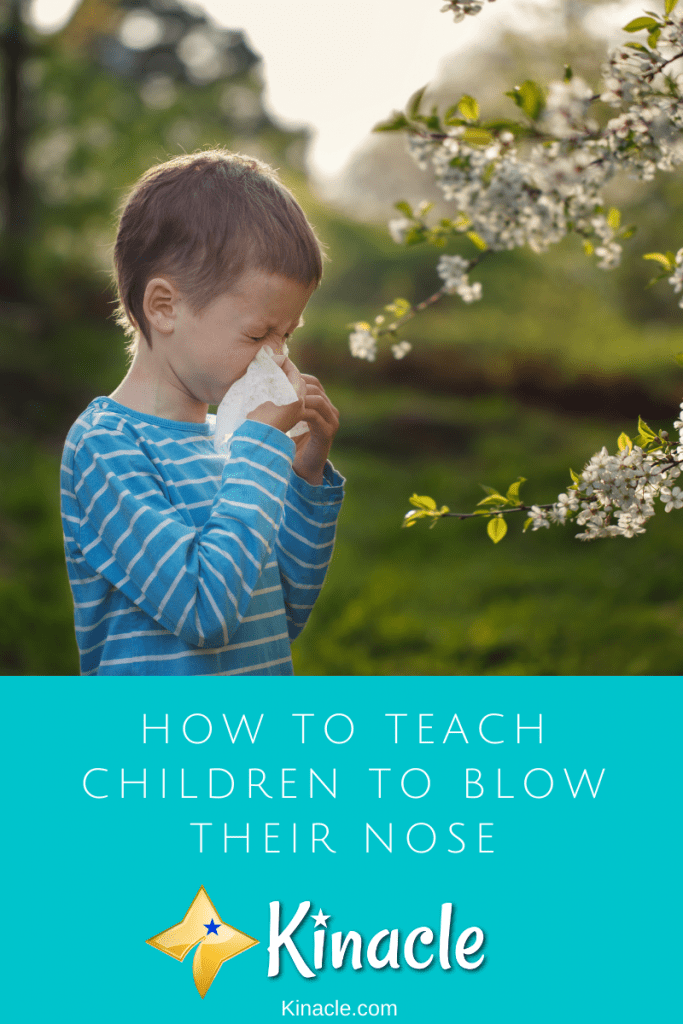
Teaching children to blow their nose may sound fun and playful but it is actually an essential skill that your kids will benefit from once the nasty colds come their way. Do you struggle teaching your little one how to blow his or her nose? Luckily, experts shared a couple of tips of make things a lot easier for you and your child.
When can you start teaching children to blow their nose?
According to some experts, children can be taught how to blow their nose beginning in toddlerhood. Though it may seem too early for them to follow instructions at this age, toddlers love to imitate their parents and older siblings, so you can use this as an opportunity to introduce proper hygiene practices at an early age.
For instance, you can begin with simple gestures like showing them how to cover your own nose with a tissue paper or handkerchief as you sneeze – or at the very least, sneezing into their elbows rather than into their hands. You may also let them watch their older siblings as they blow their nose. This way, they’ll already have an idea of what to do when they are about to sneeze or blow their nose. You’ll be surprised that kids this age would even try to imitate your gestures in their own little way.
Tips in teaching children how to blow their nose
You won’t need to wait until your child catches a cold before teaching them how to blow their nose. Once your little one gets the idea about when and how to blow their nose, you can then reinforce their actions with the following tips:
Let your child practice blowing a candle
Be reminded that very young kids may not instantly learn how to take in air and blow it out forcefully. Just like any other task, this will need time and practice to be successfully done. A fun and effective way to teach young children how to do it is by blowing birthday candles.
Light a candle and go on a pretend play that it’s his birthday. Teach your toddler that he needs to take in as much air as he can and then blow it out of his mouth for the candle’s fire to be out. Although they will be using their mouth to perform the action, many of the same skills will be used to blow their nose as well.
Practice blowing air into a tissue paper
You can also let him practice blowing using a piece of tissue paper. Simply hold a small piece of tissue paper in front of his face and let him blow air until it moves. You can also convert it as a game between the two of you or along with your other children.
Ask your child to blow the air using his nose instead of his mouth
After your child has mastered the art of blowing, you can then let him try it using his nose. Instruct your child to blow the candle or tissue paper, but now, he can only use his nose to blow out the air. You can also let him cover his mouth if it helps him blow through his nose more effectively.
Let her cover her nose with a tissue paper upon blowing her nose
Once your child successfully blows air out of her nose, you can now introduce another step, which is to lightly cover the area with a tissue paper. Tell her to blow the air straight unto the tissue and then wipe any excess snot or mucus if there is any.
Do not block one nostril while your child is blowing his nose
Take note that you won’t need to block one nostril to let your child blow the secretions out of the other one. Covering one nostril while blowing the nose will create an internal pressure which can be painful and may force some secretions to reach their ear, leading to ear infections.
Teach hygiene and sanitation practices while blowing the nose
Of course, don’t forget to emphasize that after blowing and wiping his nose, he’ll need to throw the dirty tissue paper straight into a covered trash bin and wash his hands thoroughly with soap and water. Children are good observers, so the most effective way for him to understand and remember these practices is to show them constantly how you do it yourself.
Conclusion
So that’s it for the tips in teaching kids how to blow their nose – here’s hoping that your child successfully learns how to do it properly! Just remember, children learn faster by following the actions of the people that surround them, so it’s best to teach them by setting a good example in your household.
Leave a Reply